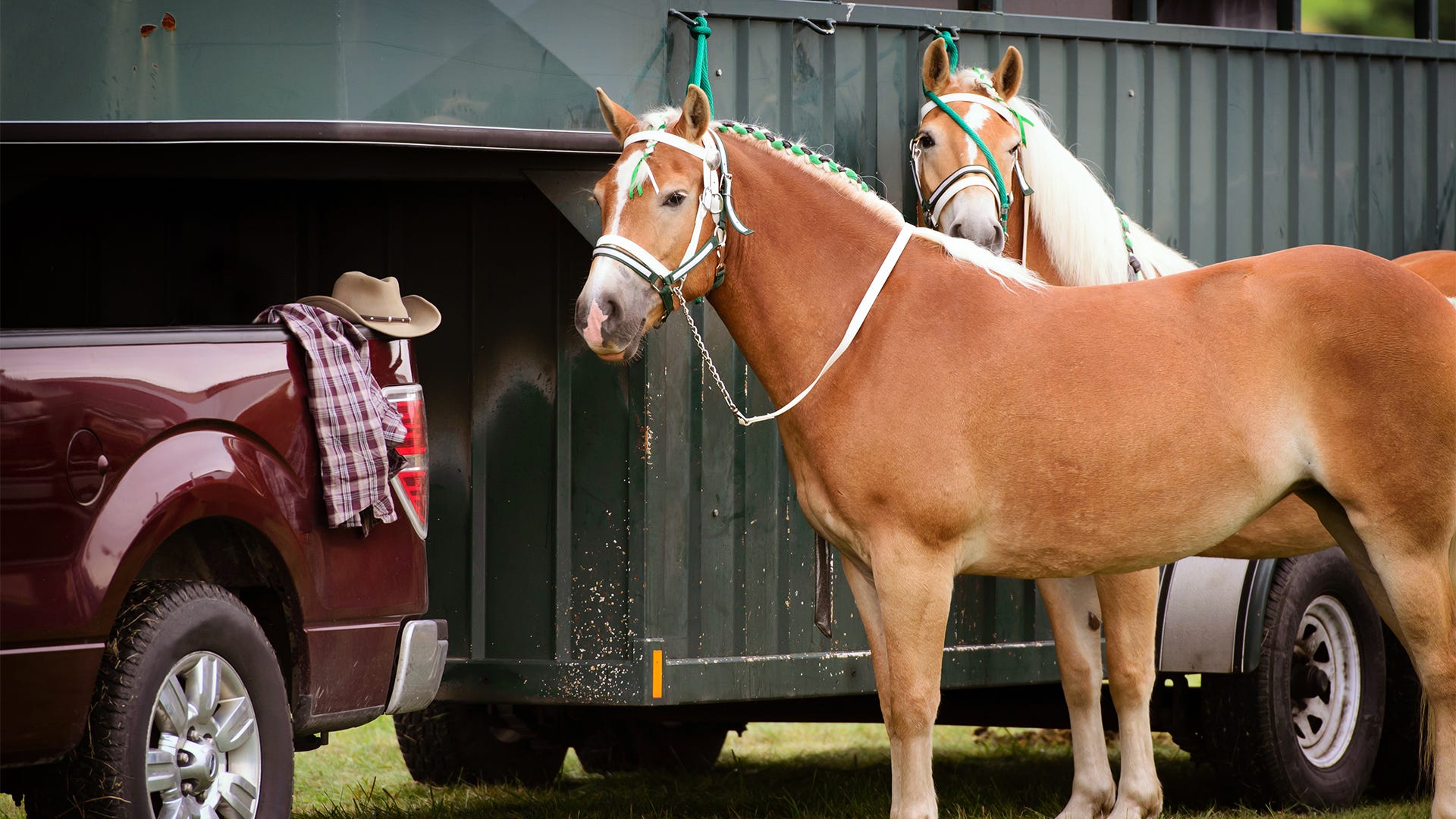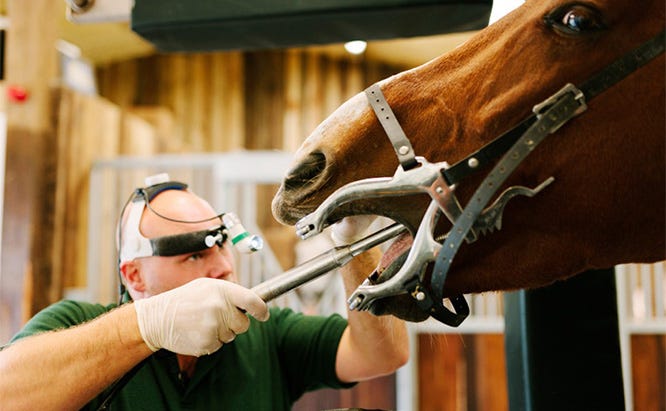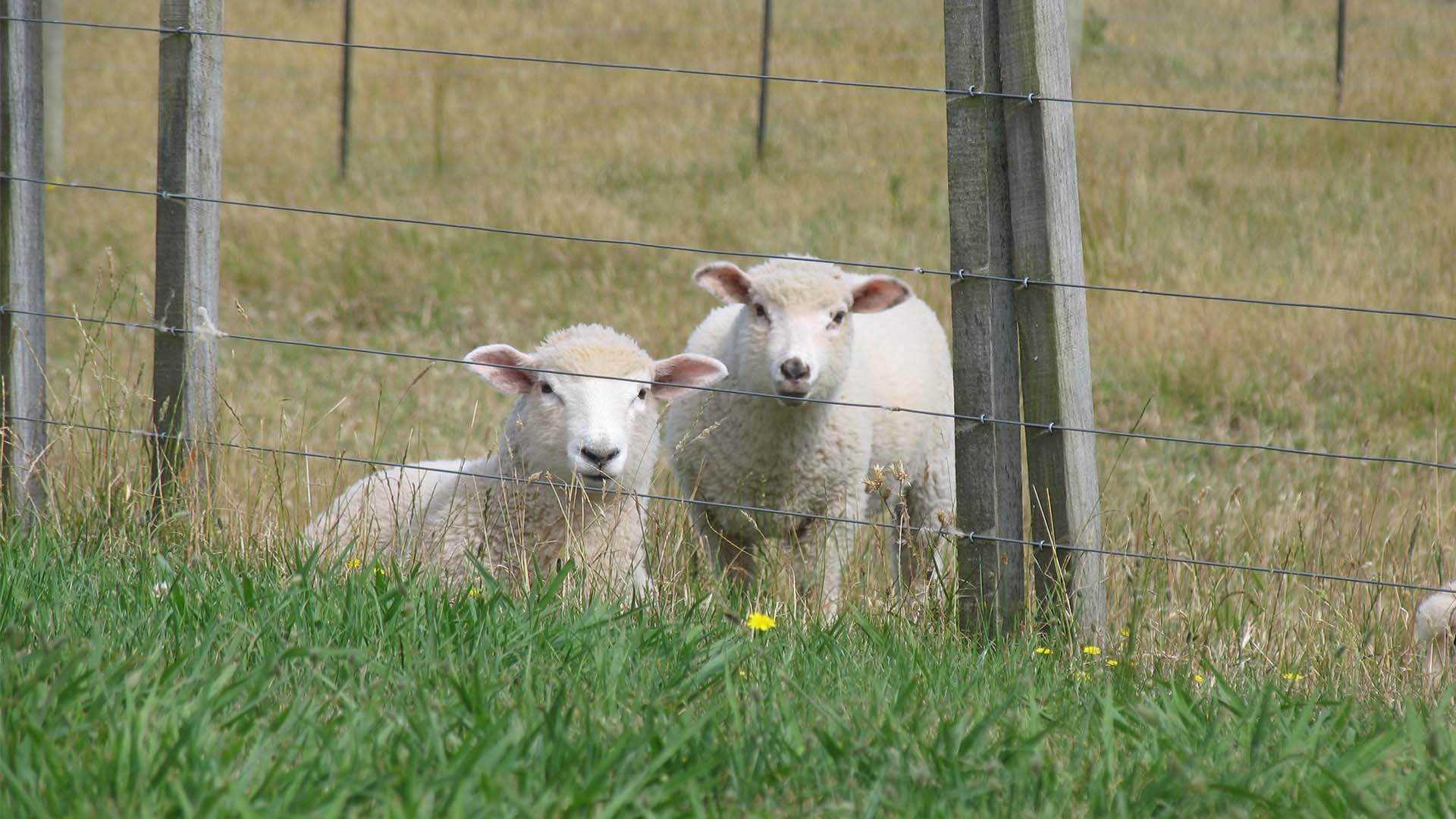
With the winter months behind us and spring on the horizon, it's time to start thinking about our amazing friends who have been kept, for the most part, in barns and horse stables over the last 12 weeks.
As we all know, spring is a time of renewal and starting fresh. As humans, we like to awaken in the spring, eat better, exercise more, and finally get around to doing all those things we’ve neglected since those frigid temperatures arrived. We need to harness that same spirit out in the stable and make the dawning spring count for our horses, too. It’s time to start anew and get your horses in shape for upcoming months of trail riding and horse showing.
So you may ask, what is it that we need to do this spring to get our horses ready for the weeks and months ahead? Lots! Here is a quick checklist of horse care tips you should be considering while getting your horses ready for spring.
Get Your Horses’ Vaccinations Up-to-Date
Veterinarians suggest that many annual vaccines be administered at regular intervals, and spring is an ideal time. Among the key annual vaccines you should be planning are:
- EEE, WEE & VEE – Eastern, Western and Venezuelan Equine Encephalomyelitis are viruses spread by mosquitoes and can affect neurological functions and lead to death.
- Equine Viral Arteritis – A contagious viral disease that can cause mares to lose their pregnancies and kill young foals.
- Tetanus Toxoid – This vaccine helps prevent tetanus in horses, who are often subjected to this bacteria throughout their environment. Horses infected with tetanus suffer from respiratory failure.
- West Nile Virus – Another mosquito-borne virus that can cause paralysis, weakness and other issues in horses before they succumb to the affliction.
Be sure to check with your equine veterinarian to make sure your horse is up-to-date on all other vaccines as well.
Offer Additional Nutrition, But Not Too Much Green Grass
Horses need proper nutrients to keep their strength and energy high. With winter gone, check your horse's body condition and reconsider your nutrition choices for them based on their condition. Likewise, you need to understand that some horses thin out over the winter, while others fatten up due to lack of exercise. Feed him accordingly.
Spring is also a time when more foraging opportunities will present themselves, but don’t expect your horses to be able to switch from hay immediately. This is the time to begin the transition to spring and summer grazing levels, so reduce feed amounts gradually.
Most importantly, don’t allow your horses to spend too much time eating fresh, green grass after a winter eating hay. Why? Green grass is high in a nutrient called fructan, and that can spell trouble for the hindgut after months of eating hay. Too much of this early-growth grass can lead to colic or laminitis.
To avoid this trouble with grass fructans, introduce your horses incrementally to the pasture over several weeks . Start with an hour on the first day and increase it by 15 minutes each day after. This helps them build up the appropriate tolerance.
Use temporary fencing to mark off certain sections of pasture for later use as well.
Check Your Horses for Skin Problems
If you’re into horse competitions and showing horses, then you know that their skin needs to be pristine. Like humans, horses can suffer from skin problems such as dermatitis. They can also develop lice, rain rot, ringworm and a variety of other skin problems. Be sure to get your horses treated as soon as a problem is identified because skin afflictions are usually a sign of a compromised immune system.
- Dermatitis – This skin inflammation is very common in horses, and can erupt for a number of reasons. When spotted, these hives can indicate sensitivity to food, insects or topical agents. Take measures to determine the source of the hives and then eliminate from the environment.
- Lice – Two of these parasites can afflict horses, often weakening them severely. Look for these tiny insects along the neck, flanks, tail base, tail, forelock and mane.
- Mange – This parasitic infection is caused by mites that presents itself as small round bumps that eventually leave bald spots with thickened skin.
- Primary Seborrhea – This is a dry dandruff condition that shows skin scaling and crusting, usually near the mane and tail base. The oily version of this dandruff condition develops as large waxy crusts along the elbows, hocks and lower legs.
- Rain Rot – A common skin infection brought on by damp conditions that appears as crust-like scabs or small mats of hair about ¼ inch wide.
- Ringworm – This contagious fungal infection is evidenced by patches of raised, hairless skin, often where the horse comes in contact with tack or harness.
Watch for Signs of Dental Issues
Horses should have annual dental checkups to be sure that their teeth are in good condition and doing so in the spring is important as the transition from a winter feeding regimen. If a problem developed during those long weeks in the stable, then there’s still time to help. Your horses may be having dental issues if they:
- Demonstrate pain while eating or are eating very slowly.
- Leave long, unchewed plant matter in their manure.
- Make a slurping sound while eating.
- Exhibit bleeding from the gums or swellings in the lips, cheek or tongue.
- Resist taking bits, exhibits head shyness or shake their heads a lot while working.
- Show a reluctance to eat their normal foods.
Keep Hooves Healthy
Although hooves don't grow quite as fast in the winter, they still grow. Proper hoof care in the spring is a must. There is a danger that a hoof will get out of balance or cracks will develop. Paying attention to your horse's hooves can save a lot of time, energy, pain and money. Here are four ways to keep their hooves healthy:
- Inspect – Take a look at your horses’ hooves on a daily basis. Inspect for shoe problems, injuries and other telltale signs of a problem.
- Clean – To do so, clean your horses’ hooves on a regular basis with a hoof pick and stiff bristle brush. Aim to clean out debris daily from the sole, especially if you plan on riding it or working with it in the pasture.
- Feed – Your horses’ hooves require specific nutrients, so keep an eye out for a hoof supplement that contains biotin and zinc to ensure robust hoof growth.
- Exercise – Look for ways to keep your horses moving. Doing so will promote appropriate hoof growth and strengthening. One way to keep them moving is to provide them with small enclosure via electric fencing and add a horse soccer ball.
Begin Parasite Control
Spring is the ideal time to provide your veterinarian with a manure sample from each horse to test for parasites. Once the results are back:
- Discuss – Be sure to talk about how much, if any, of a parasite load your horse can carry since these parasites can grow resistant to the deworming drugs. Be aware that horses carrying parasites will often lose nutrition, which can be costly to you in feed and medical bills.
- Medications – Determine the best medications to apply to your horses and their effects.
- Schedule – Set and follow a strict horse deworming schedule.
- Dosage – Learn the appropriate dosage for medications for each horse, since your horses will be dosed by body weight.
- Administration – Learn the best way to provide the deworming medication – whether its by syringe or pellets, and understand the conditions needed for each.
Start Exercise and Conditioning
It’s important to ease your horse back into regular activity. Much like humans, horses can become ‘couch potatoes' during the winter months in the horse barn. Slowly ease your horse back into an exercise/training routine. If you don't, you run the risk of injuring your horse if you immediately engage in strenuous activity.
Some ideas:
- Exercise Ball – Add an exercise ball to your pasture and watch the fun.
- Encourage Roaming – Put your horses out in the pasture, and set up water tanks, salt licks and other interesting objects on the far side.
- Guided walks – Rather than ride your horse somewhere, take it for a walk by leading it and then bringing it back.
- Half Rides – Similar to the guided walk, you lead the horse out, but then ride it back home.
Springtime Fence Maintenance
You should also use this time to check your ElectroBraid® horse fence for any necessary repairs. Winter weather can wreak havoc on even the sturdiest of fencing, causing containment issues for you and safety issues for your horses. A few simple steps can prevent any problems from arising in the warmer weather. It wouldn’t be surprising to find problems with your electric horse fence after a season of wintry weather. With the constant freezing and thawing of the earth, it is likely that your fence posts could be loose or leaning.
Walk The Line
Walking the fence line is the best way to find any problems with your system and correct them before your animals are put in harm’s way either by injury or getting loose. As you walk the line, bring along some tools such as a hammer and fence tester so that you are able to fix the smaller, easier jobs as you go. You know your fence like no one else, so bring the tools you think are most appropriate. Take a notepad with you and jot down the various issues that you observe with your fence and tend to the easier tasks as you move along.
- A sagging fence can be easily repaired by tightening and refastening wire that may have come loose over the winter months
- Sagging gates may also just need a simple tightening
- Loose nails can be hammered back into the fencing or completely replaced if needed
- Broken and weak boards will need to be replaced for sure, write down how many new boards you will need so it is easy to remember
- Broken and inoperable wires will need to be repaired or replaced as well
- Also note any other things that you would like to fix at a later date
Fixing what you can immediately and then going back to make more complicated repairs will keep your animals safe and secure. This way, you will be able to monitor what areas need major repairs and keep your horses away from those areas if necessary. Temporary fencing can assist in keeping your horses safe and sound while you make repairs.
Welcome Spring with Your Horse
By following a few simple steps you and your horse will be happy going into the spring and summer months! Have you got any additional tips or ideas on how to get your horses ready for spring? Let us know when you visit ElectroBraid® on Facebook!
You can also subscribe to the Electrobraid® eNewsletter by visiting ElectroBraid.com and entering your email address.





